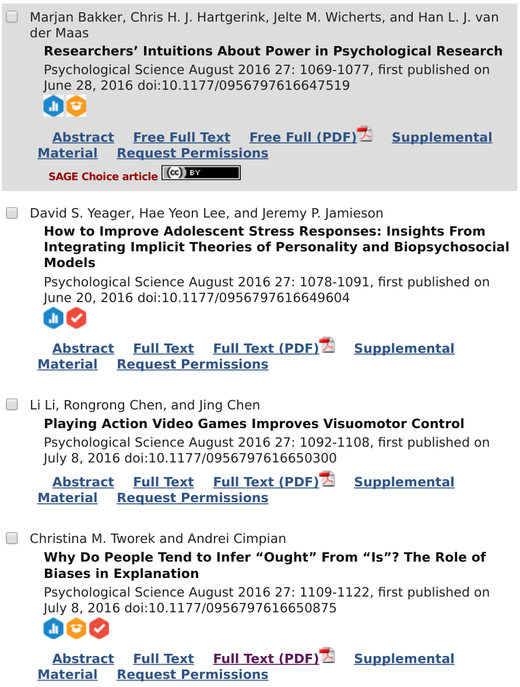[ad_1]
The open source world pioneered the use of digital badges to reward skills, achievements, and to signal transparency and openness. Scientific journals should apply open source methods, and use digital badges to encourage transparency and openness in scientific publications.
Girl Scouts and Boy Scouts know all about merit badges. Scouts earn merit badges by mastering new skills. Mozilla Open Badges is a pioneer in awarding digital merit badges for skills and achievements. One example of a badge-issuing project is Buzzmath, where Open Badges are issued to recognize progress in mathematics to students, or anyone wanting to brush up on their skills. Another example is IBM Training and Skills, which issues badges to validate credentials earned in their certification programs.
The Center for Open Science went beyond validating skills and established badges for open data and open materials in 2013, and created guidelines for issuing these badges.
A recent PLoS (Public Library of Science) article, Badges to Acknowledge Open Practices, discusses the use of badges on scientific articles to increase transparency. They were used in a scientific journal, and the impact of their use measured and discussed. The idea is quite simple—give authors the option to apply for badges that mark their articles as having open data or open materials. If they meet the criteria authors can mark their articles with the appropriate badges. A badge cannot guarantee that data or materials are open or available in perpetuity, but they do act as a simple signalling mechanism, and clearly identify the intent of the authors. There are a lot of other things that must be in place for this to be effective, such as data formats, standards, and curation of quality data.
That said, as stated in the article, badges are a low-cost way to encourage improved openness and transparency in scientific publications. The open access movement has made a lot of headway, and CC BY is quickly becoming the dominant license applied to articles. Even if all scientific literature were open access, that we need improved openness and transparency in the publication of scientific data, materials, code, and analysis is clear. These badges, coupled with other identifiers, showed improvement in open data and materials from a few percent to tens of percent of articles. The screen capture below of Psychological Science (see the current issue) shows the badges displayed in the table of contents. The availability of data, materials, and whether the article is open access are all displayed. This is a simple way to highlight articles that strive to fulfill the open science requirements.

For us to consider how we can provide adequate motivators and also clearly identify authors and articles that embrace the open source way is important. This was a limited trial that shows promise, and hopefully it will motivate other journals to explore the approach, which needs to spread to tenure committees, research supervisors, and funding agencies. In my humble opinion, this will only work when coupled with other efforts, but it seems there is merit worthy of consideration. The recent Cancer Moonshot from the White House outlined the importance of open data, and if journals provided simple identifiers such as badges, the ability for funding agencies and others to verify openness would be simplified.
What do you think of the movement toward using badges and their use in scientific publication? Let me know your thoughts in the comments.
[ad_2]
Source link